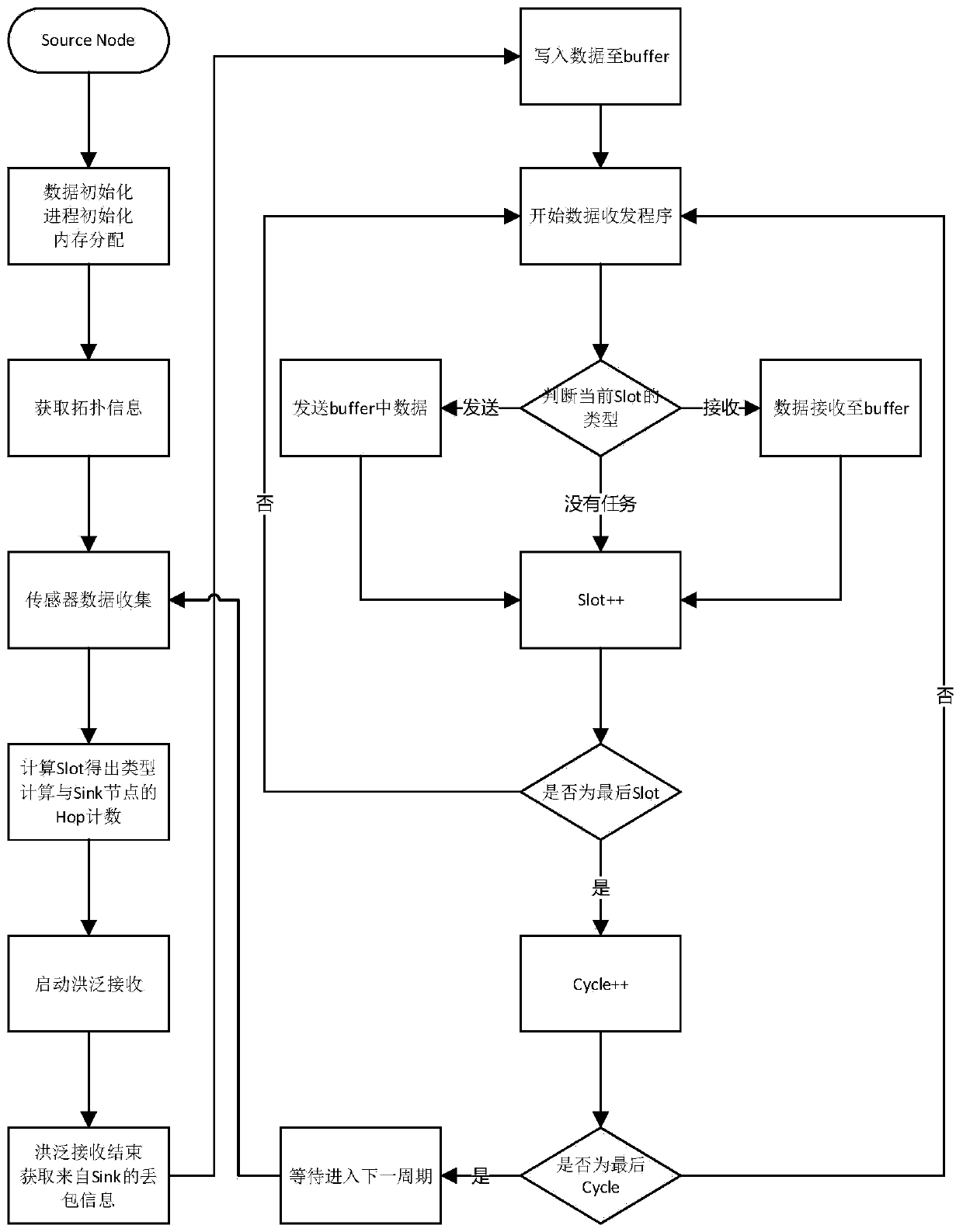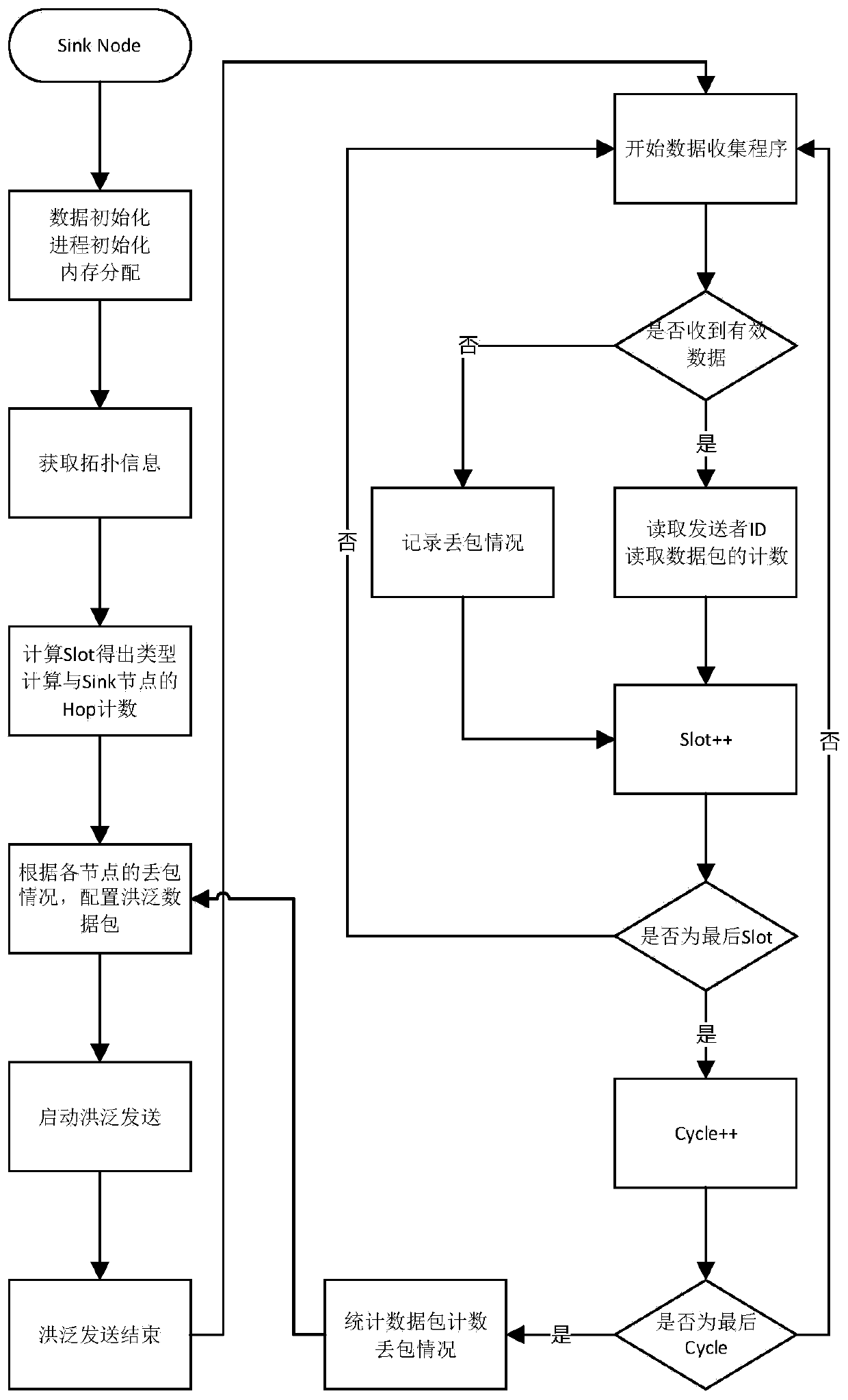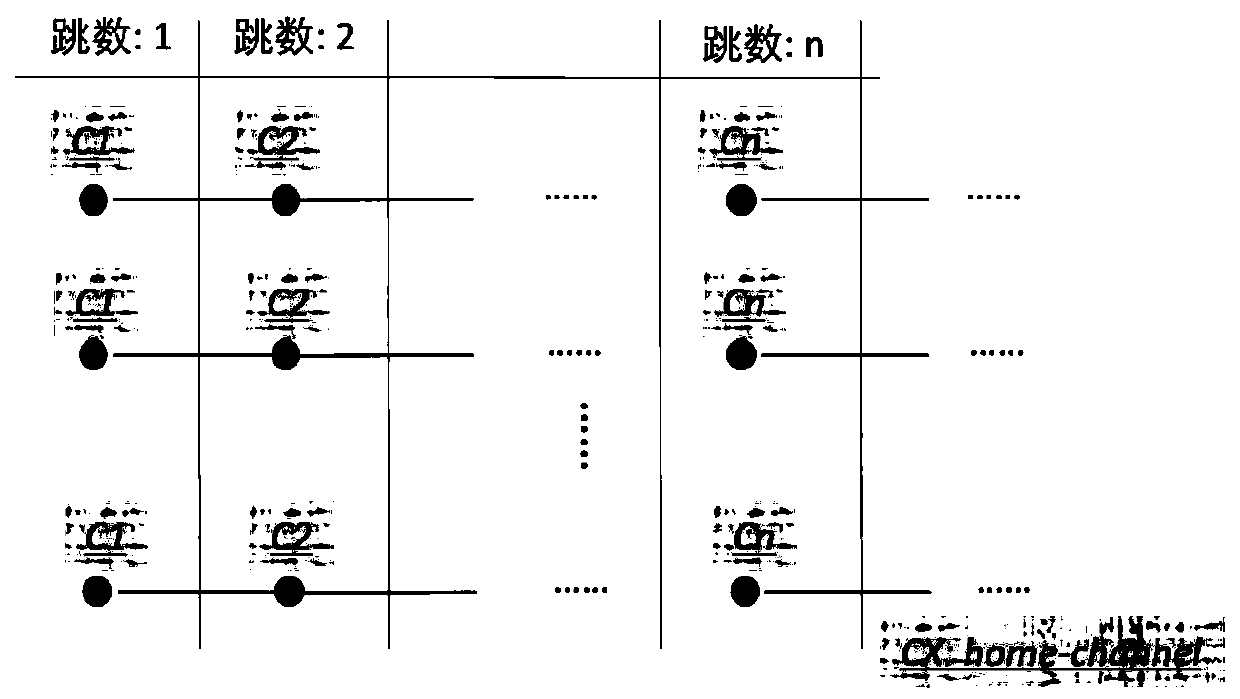Reliable low-power-consumption high-throughput wireless sensor network data collection method
A wireless sensor, high-throughput technology, applied in wireless communication, advanced technology, energy reduction, etc., can solve problems such as two-way communication conflicts, achieve low power consumption, achieve reliability, and short turn-on time.
- Summary
- Abstract
- Description
- Claims
- Application Information
AI Technical Summary
Problems solved by technology
Method used
Image
Examples
Embodiment 1
[0065] Such as figure 1 and figure 2 As shown, the reliable low power consumption high throughput wireless sensor network data collection method described in the present invention comprises the following steps:
[0066] S1: Time slot allocation: Each node uses a heuristic algorithm to allocate corresponding multi-channel transmission time slots according to the topology of the network. Channels are allocated based on the number of hops. The heuristic algorithm used to optimize the time slot allocation includes the following small steps:
[0067] S11: the aggregation node collects a tree-based network topology;
[0068] S12: Each node uses setting 0 and setting 1 to represent whether there is a data packet to be sent;
[0069] The initial state of all nodes except the sink node is set to 1, and the sink node is always set to zero;
[0070] S13: The algorithm performs the following cycle:
[0071] S131: traverse each node including the sink node, find all zero-set nodes, an...
Embodiment 2
[0092] In view of the above existing problems, the present invention provides a wireless sensor network data collection method capable of achieving reliability, low power consumption, and high throughput, which includes three parts.
[0093] S1: Time slot allocation: Each node uses a heuristic algorithm to allocate corresponding multi-channel transmission time slots according to the topology of the network. The specific steps of the algorithm are as follows:
[0094] (1) The aggregation node collects a tree-based network topology;
[0095] (2) Each node uses setting 0 and setting 1 to represent whether there is a data packet to be sent. The initial state of all nodes except the sink node is set to 1, and the sink node is always set to zero;
[0096] (3) The algorithm performs the following cycle: traverse each node (including the sink node), find all nodes that are set to zero, and record them. When this loop ends, check whether there is a node set to 1 among the child nodes...
Embodiment 3
[0103] The technical solution of the present invention will be described in further detail in conjunction with the accompanying drawings and embodiments.
[0104] The present invention utilizes a half-duplex transmission protocol of flooding fast collection, including a collection node (SinkNode) and source nodes (Source Node) of each sensor, and utilizes radio flooding to realize the fast collection and processing of Source Node data. reliable communication.
[0105] For the collection node Sink Node, regardless of any power consumption, it continuously receives data from each node, and collects and transmits it to the host computer.
[0106] For the source node Source Node, data is sent and received according to the sending and receiving order obtained from the topology. Send the data collected by itself (such as data from various sensors) to the upstream node. After the first sending, the data from the downstream node will also be received, but the data is only transmitte...
PUM
 Login to View More
Login to View More Abstract
Description
Claims
Application Information
 Login to View More
Login to View More - R&D
- Intellectual Property
- Life Sciences
- Materials
- Tech Scout
- Unparalleled Data Quality
- Higher Quality Content
- 60% Fewer Hallucinations
Browse by: Latest US Patents, China's latest patents, Technical Efficacy Thesaurus, Application Domain, Technology Topic, Popular Technical Reports.
© 2025 PatSnap. All rights reserved.Legal|Privacy policy|Modern Slavery Act Transparency Statement|Sitemap|About US| Contact US: help@patsnap.com



